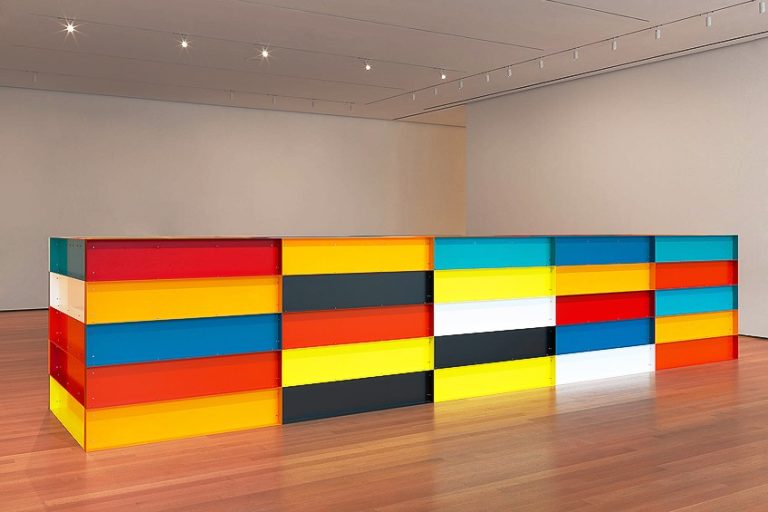Space in Art – Complete Guide with Examples and Tips
When we talk about space in art, we do not necessarily mean outer space like the moon and the stars. We’ll go through the definition including examples, show you the different ways on how to create space in art, and also show you how to achieve this effect in your own artworks.
Table of Contents
What Is Space in Art?
Space is one of the elements of art and is usually described as the “area” that is either around, inside, or between an artwork. Furthermore, there is always an action that takes place on our, the viewers’, part when we engage with a work of art, and in turn, we engage with the space in or around it too.
This can be the space between the subject matter in a painting, a photograph, or graphic art, which we stand in front of and view.

It can also be the physical space around or between a sculpture, which we walk around, or the space inside an architectural structure, which we move in and out of. Below, we will expand on space further, discussing the types of space, and providing various space in art examples to illustrate the above-mentioned ideas.
The Types of Space in Art
There are several types of space in art to be aware of, or that you may have heard of before. All of these can be applied with various techniques to create different pictorial effects in artworks. For example, perspective and depth, with the assistance of other art elements like color, value, or texture, can create a three-dimensional space on a canvas.
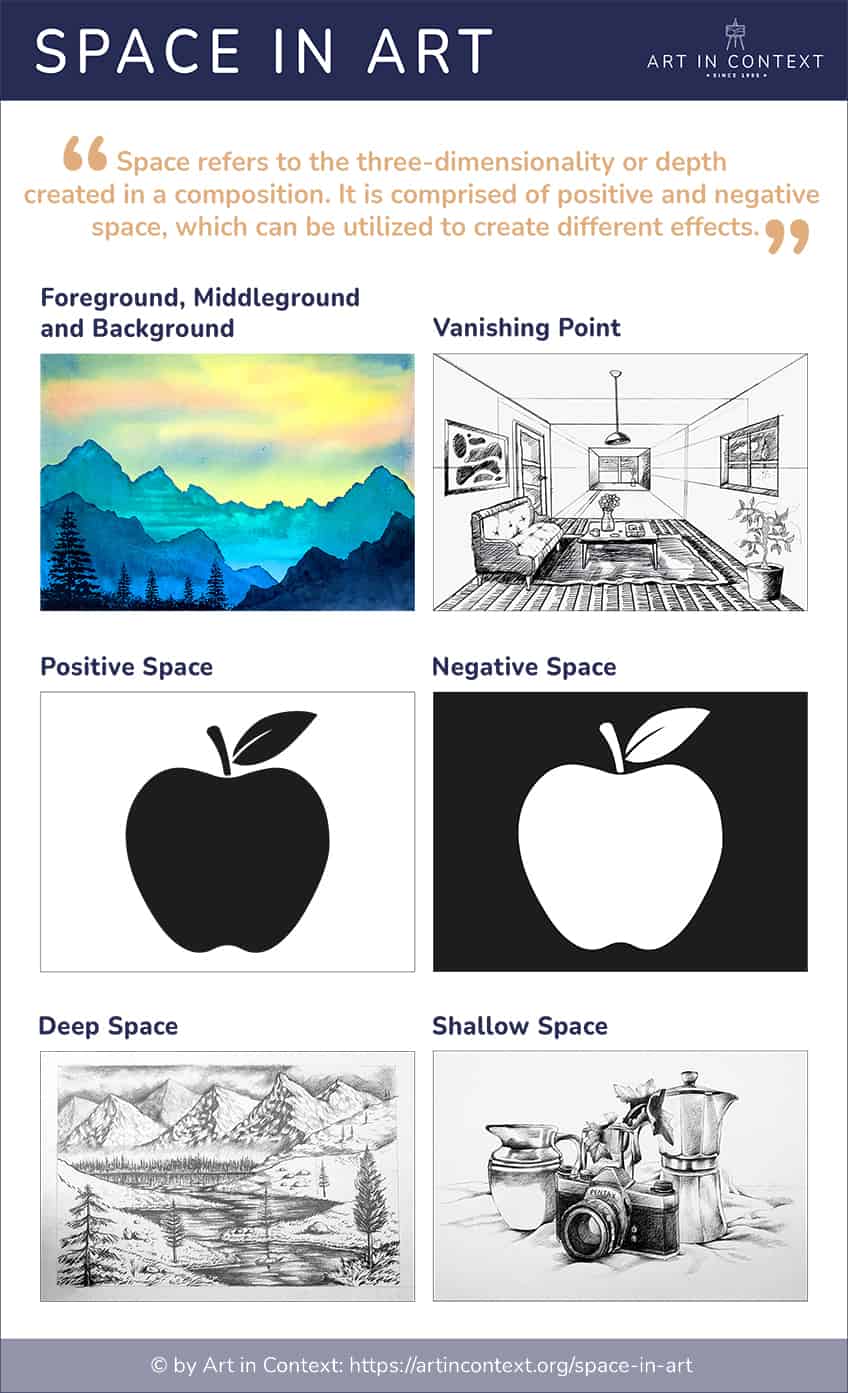
Space can emphasize a specific subject matter and lead our gaze towards it.
Furthermore, space in art can also evoke emotional responses and create certain moods due to the manner it is utilized. These effects will inform and direct how we interact with and interpret the overall artwork or structure, in other words, how we interact with the space physically, emotionally, and mentally. Let us look below.
Positive and Negative Space
Positive and negative space can almost be considered as the used and unused space in an artwork. In other words, the positive space is the used, or active, area, which depicts the subject matter, and the negative space is unused or not as active, or “passive”, in its use of the subject matter. For example, think of an apple sketched on a plain white piece of paper. The apple is the used space, so to say, and the main subject; the apple occupies the positive space. The white space around the apple is the negative space.
It is important to remember variety when it comes to positive and negative space, and that negative space is not always completely boring like a white piece of paper.
Negative space can also be utilized to add emphasis to artwork as well as complement the positive space, whether it is through color, value, texture, or any other art element.
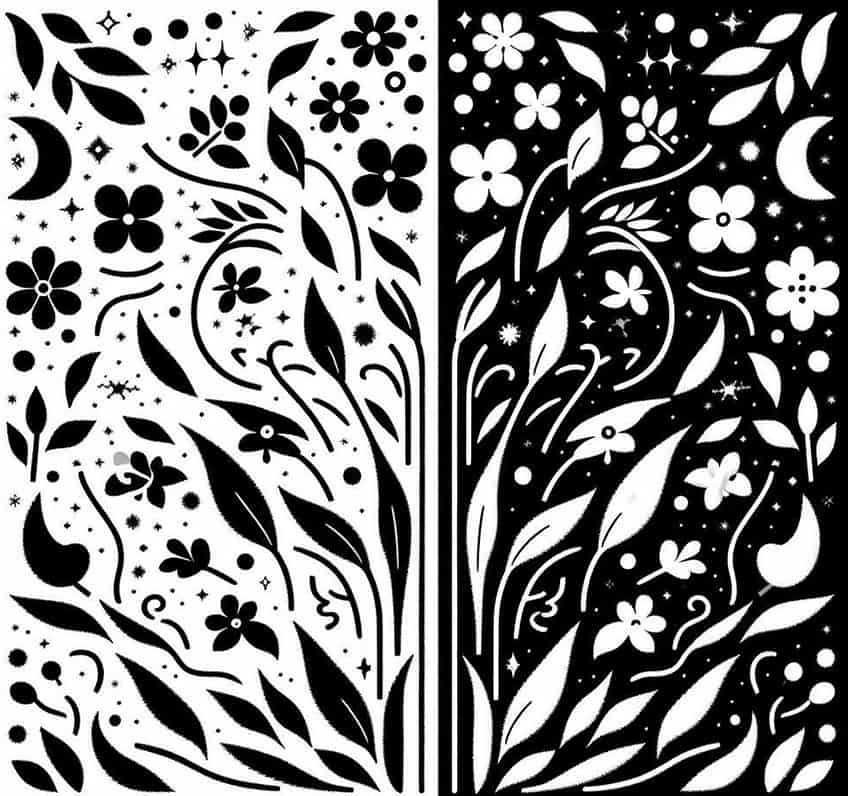
However, if we look at the space in between the animals it could be considered the negative space, but the image becomes illusory, and what we perceive as the space between slowly appears active as if it is the shape of a bird and fish. In other words, what appears to be the negative space in between simultaneously becomes the positive space.
Another example includes Michelangelo’s fresco “The Creation of Adam” (c. 1512) on the Sistine Chapel ceiling in the Vatican City in Rome, Italy. The famous painting depicts Adam on the left and God on the right reaching out to one another, their index fingers just about to touch.
The two figures, God and Adam, who are about to connect, fill up the positive space in this painting, creating burgeoning anticipation of what is about to happen. However, notice the space behind them. The background is seemingly more neutral and does not depict anything that draws our attention to it, which would be considered negative space.

This is also an open space that emphasizes the main focal point, which is the creation of Adam. This is another example of how space can draw our attention to what we need to see in a visual composition. In sculpture, the Recumbent Figure (1938) by Henry Moore is another good example of three-dimensional space.
Here, the figure, made from stone, occupies the positive space and we can see the negative space around it and between the open spaces of it.
Deep and Shallow Space
Deep and shallow space refers to the degree of depth a picture plane has. For example, deep space, which can also be referred to as three-dimensional space, in a visual composition consists of the foreground, middle ground, and background. We, the viewers, will be able to see the subject matter that is further away as well as closer to us.
With this, three-dimensional space is often described in terms of height, width, and length, providing more depth.
Deep space in art examples includes the Renaissance painting by the Italian Pietro Perugino titled Delivery of the Keys, which is also titled Christ Giving the Keys of the Kingdom to St.Peter, (1481 to 1482). Here we see the illusion of depth created through various techniques like linear and atmospheric perspective.

Another example is Avenue de l’Opéra: Morning Sunshine (1898) by the French Camille Pissarro. Here we see the background becoming blurrier and hazier in color while the foreground is clearer and in focus. This contrast in color creates spatial depth.
Shallow space, which is more related to two-dimensional space, in a visual composition will mostly depict subject matter closer to us, the viewers.
Objects may also appear more in the foreground and not as far into the background often causing the image to appear flatter. Two-dimensional space is often described in terms of having width and length, and with minimal or no depth.

Shallow space in art examples includes the oil paintings The Portuguese (c. 1911) by the Cubist Georges Braque and Ma Jolie (1911 to 1912) by Pablo Picasso. In both paintings, typical of the Cubism art style, we see a minimal distinction between the foreground and background. The space is shallow and seemingly singular, wherein all the subject matter takes place. This Cubist style is exemplary of art that did not follow the traditional rules of perspective and depth in a painting as we see in more three-dimensional paintings.
It also illustrates art that moves away from more realistic depictions toward abstracted or so-called “non-representational” depictions.
How to Create Three-Dimensional Space in Art
Now that you have an idea of the types of space in art, it is also important to understand how these can be created. There are several techniques that we outline below that can be applied in numerous ways to create the effect of three-dimensionality and depth.
Perspective
Various types of perspectives will create the effect or illusion of three dimensions. There are different types of perspectives:
One-Point Perspective
One-point perspective is a technique that creates the illusion of depth by converging parallel lines toward a single vanishing point on the horizon.

Two-Point Perspective
Two-point perspective is a technique where parallel lines along the width and depth of an object are drawn to converge at two separate points on the horizon line, creating a sense of three-dimensional space.

Three Point Perspective
In three-point perspective drawing, a trio of vanishing points—one on the horizon and two typically above and below—work together to render complex dimensions, capturing the height, width, and depth of subjects, ideal for towering forms or aerial perspectives.
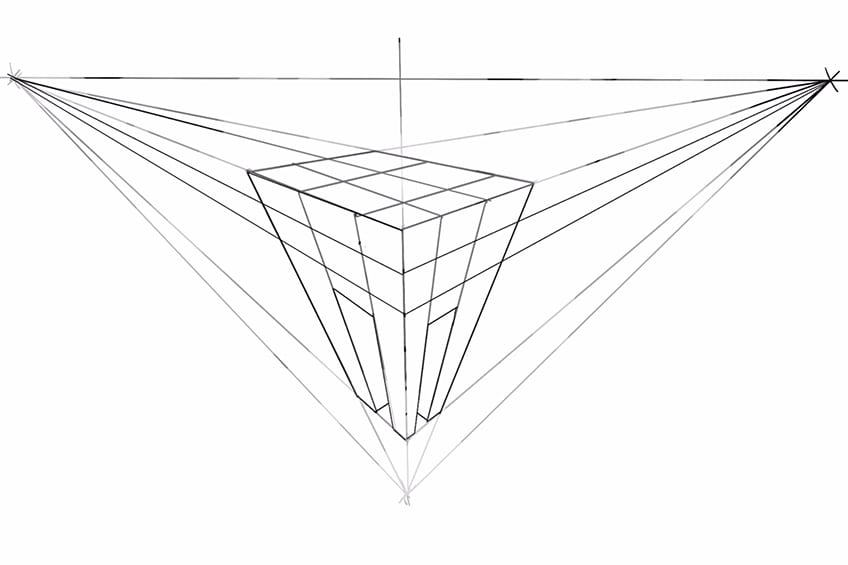
Foreshortening is another important technique that many artists apply. It is often described in terms of how the subject matter “recedes” in space. A popular example often mentioned is Lamentation Over the Dead Christ (c. 1480) by Andrea Mantegna. Here, we see how the figure of Jesus Christ appears almost short or as some describe it “compressed” giving the illusion of spatial depth.
Furthermore, this technique also creates a heightened emotional effect and draws us, the viewers, into the composition, as if we are in the scene.
Overlapping
Overlapping refers to when two or more objects are placed one in front of the other in a composition. The object in the forefront will appear closer to us compared to the object that is placed behind it, which will appear further to us.

Position
Position, often also termed placement, can go together with size. When the subject matter is placed in the lower portion or forefront of a visual composition, it will appear larger in size than the subject matter placed in the upper portion, or middle ground to the background, which will appear smaller in size, creating the illusion of depth.

It is also important to remember that there is a myriad of ways to utilize placement and sizing of subject matter.
Size
Objects depicted with smaller dimensions in a composition will seem to be at a greater distance from the observer.

Color and Value
Color and value can also create depth through different techniques like highlights and shading. This can also include giving subject matter less visible detail in terms of color in the background and more detail in the foreground, which will distinguish depth.
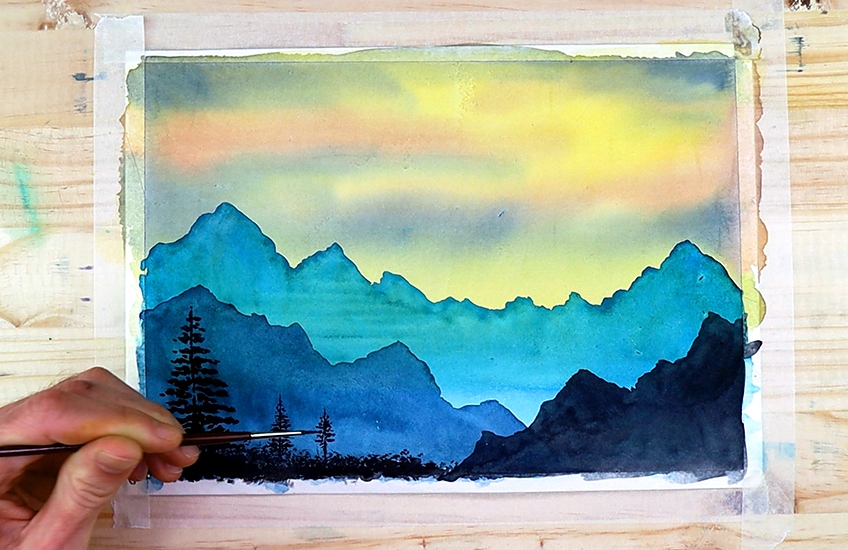
This is also where color value can appear lighter in the background and darker as it is more in the foreground.
Creating Some Space
While many of the techniques mostly relate to two-dimensional spaces becoming three-dimensional, like photographs, paintings, or drawings, we must not forget that these techniques can equally apply to already three-dimensional spaces like sculptures or architecture.
Although these are guidelines and tools mentioned, as artists and art historians, it is important to remember there is no “one size fits all” when it comes to creating art. There are many methods and applications that will create space in artworks from abstract to realistic. Furthermore, these guidelines will also provide you with the necessary visual tools when you look at an artwork. We leave you with this question: what is the space around you composed of?
Learn everything about the Elements of Art
We have written a series about all the elements of art, if you would like to dive a bit deeper into the topic:
Frequently Asked Questions
What Is Space in Art?
Space in art refers to the area in a two-dimensional visual composition like graphic art, painting, or drawing, as well as a three-dimensional sculpture or architectural structure. It comprises the total area surrounding the subject matter, which can be inside, around, in between, below, and above.
What Are the Types of Space in Art?
There can be positive and negative space in art, as well as deep and shallow space, two-dimensional, three-dimensional, and closed or open spaces. All these types can be created through different techniques like perspective, color, positioning, sizing, and more.
What Is Positive and Negative Space in Visual Art?
Positive space in art is the subject matter of a visual composition. It is the so-called active occupied space, whereas the negative space is the so-called passive space, which is the area around the main subject matter. The negative space is also as important as the positive space because it can create emphasis and set a specific mood. Both types of spaces can also interact with one another.
Alicia du Plessis is a multidisciplinary writer. She completed her Bachelor of Arts degree, majoring in Art History and Classical Civilization, as well as two Honors, namely, in Art History and Education and Development, at the University of KwaZulu-Natal, South Africa. For her main Honors project in Art History, she explored perceptions of the San Bushmen’s identity and the concept of the “Other”. She has also looked at the use of photography in art and how it has been used to portray people’s lives.
Alicia’s other areas of interest in Art History include the process of writing about Art History and how to analyze paintings. Some of her favorite art movements include Impressionism and German Expressionism. She is yet to complete her Masters in Art History (she would like to do this abroad in Europe) having given it some time to first develop more professional experience with the interest to one day lecture it too.
Alicia has been working for artincontext.com since 2021 as an author and art history expert. She has specialized in painting analysis and is covering most of our painting analysis.
Learn more about Alicia du Plessis and the Art in Context Team.
Cite this Article
Alicia, du Plessis, “Space in Art – Complete Guide with Examples and Tips.” Art in Context. July 11, 2022. URL: https://artincontext.org/space-in-art/
du Plessis, A. (2022, 11 July). Space in Art – Complete Guide with Examples and Tips. Art in Context. https://artincontext.org/space-in-art/
du Plessis, Alicia. “Space in Art – Complete Guide with Examples and Tips.” Art in Context, July 11, 2022. https://artincontext.org/space-in-art/.








